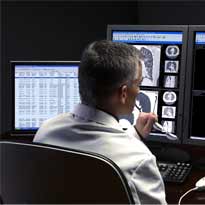Carestream installs PACS at 26 hospitals
- 14 January 2011

Carestream Health has completed the roll out of its picture archiving and communication system and radiology information system across 26 hospitals in the Spire Healthcare group.
The company has supplied the hospitals with a central data centre to provide a single RIS that supports the group hospitals with a central PACS and long term archive.
Each of the hospitals is continuing to use the same server and additional storage facility but Carestream’s Workflow Manager is also supporting local image capture, local reporting and local access to images and reports in wards and clinics.
The applications held in the data centre contain a copy of every image and report that is generated in each hospital.
Web based access to RIS and PACS functionality provides external reporting and the central archive allows images and reports to be shared with the NHS, if necessary, through the uses of DICOM access points and HL7 messaging.
Stephen Hayward, IT and operations director for Spire Healthcare, said: “The way Spire has deployed the Carestream system means that our centralised architecture enables hospitals to work more flexibly, including allowing consultants to report remotely in certain circumstances.
“Having images stored digitally enables Spire hospitals to share images and reports with other hospitals and clinicians, including NHS trusts, as required, improving the continuity of patient care.”
Before the RIS and PACS systems were implemented, Carestream won a separate deal with the private hospital group to move the trust from computed radiography systems to analogue to digital images.
Hayward added: “Some of our hospitals already had CR and, having seen the benefits this brings, we knew that eliminating nearly all film in hospitals would result in less filing work, lower storage costs, reduced consumables costs, a reduced need to re-scan patients and would also make it harder for images to go missing.”
Throughout the roll out of the PACS and RIS, Carestream ensured that the two projects were linked so that the anticipated increase in number of exams generated could be managed and information could be shared with external agencies as well as being accessed by mobile units.
“As images are stored digitally there is always a copy available so there is no need to re x-ray patients, which minimises the dose of radiation to which they are exposed. Patients also don’t have to wait as long for their reports,” Hayward said.




